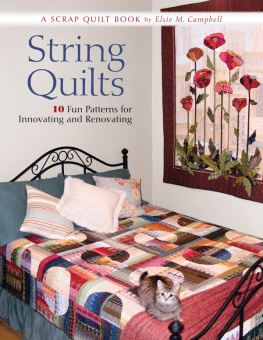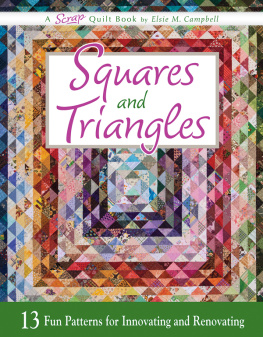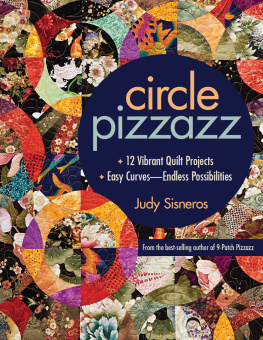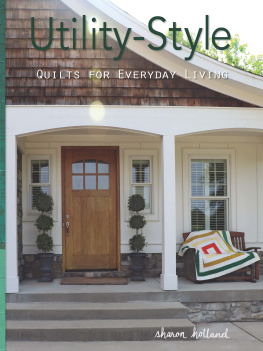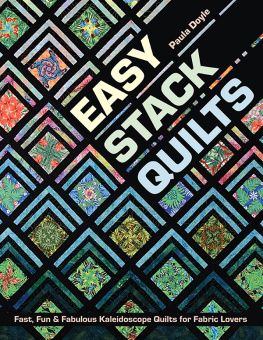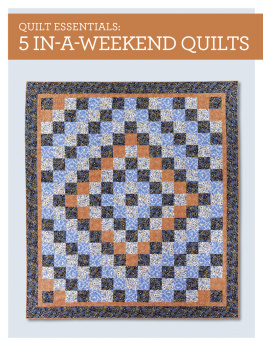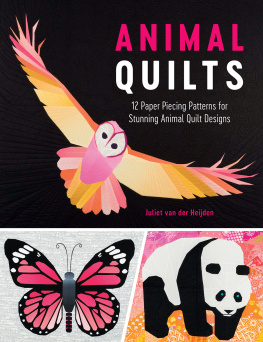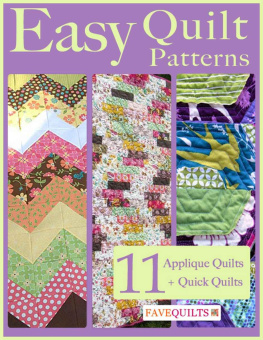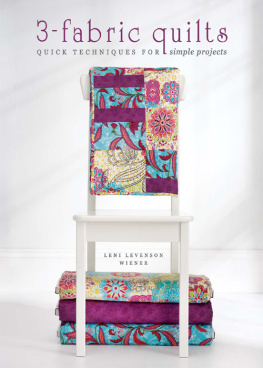Copyright 2014 by Elsie M. Campbell
All rights reserved. No part of this book may be reproduced in any manner without the express written consent of the publisher, except in the case of brief excerpts in critical reviews or articles. All inquiries should be addressed to Good Books, 307 West 36th Street, 11th Floor, New York, NY 10018.
Good Books books may be purchased in bulk at special discounts for sales promotion, corporate gifts, fund-raising, or educational purposes. Special editions can also be created to specifications. For details, contact the Special Sales Department, Good Books, 307 West 36th Street, 11th Floor, New York, NY 10018 or info@skyhorsepublishing.com.
Good Books in an imprint of Skyhorse Publishing, Inc., a Delaware corporation.
Visit our website at www.goodbooks.com.
10 9 8 7 6 5 4 3 2 1
Library of Congress Cataloging-in-Publication Data is available on file.
Photo credits: front and back cover, title page, by Elsie Campbell; all other photos by Kenneth Campbell.
Illustrations and diagrams by Cynthia Vierthaler
Design by Cliff Snyder
Print ISBN: 978-1-56148-675-5
Ebook ISBN: 978-1-68099-011-9
Printed in the United States of America
The diagrams and templates in this book may be reproduced and enlarged for personal or educational use. Excluding diagrams and templates, no part of this book may be reproduced in any manner, except for brief quotations in critical articles or reviews, without permission.
Library of Congress Cataloging-in-Publication Data
Campbell, Elsie, 1949
String quilts : a scrap quilt book / by Elsie M. Campbell.
p. cm.
ISBN 978-1-56148-675-5 (pbk. : alk. paper) 1. Patchwork--Patterns. 2. Quilting--Patterns. I. Title.
TT835.C3566 2009
746.46041--dc22 | 2009019706 |
Table of Contents










Introduction
My earliest memories include string quilts. Shortly after I was born, my maternal grandmother lovingly stitched a string quilt for my crib from bits and pieces of old clothing and scraps left over from her hand-made dresses. For the foundations, she cut squares from still-usable parts of worn household linens like bed sheets and dish towels. The strips and pieces from the clothing were stitched to the foundation squares, and then those squares were sewn together to make the quilt top.
Grandma didnt even buy new batting for her quilts. She simply cut the least worn parts from an old cotton flannel blanket and used that as the middle part of the quilt. Another piece of flannel for the backing, and a few yarn ties, and my crib quilt was complete. This quilt became my blankie, my comfort when things didnt go as I wished. My sister and I used this little quilt as the door when we made tents over the clothesline. Sometimes we hid under our quilts to read a book by flashlight so Mom wouldnt know when we stayed up past our bedtimes. I still love this quilt for all the memories attached to it; I wouldnt trade it for any other quilt in the world.
Even though I now make much larger and more complicated quilts with elaborate patterns, I still love to make string quilts for my grown children and other family membersto use as throws on a bed or couch, to stay warm at outdoor events, or to cover the ground for picnics. When I make string quilts, I dont usually plan every piece before cutting and sewing strips together. I just begin stitching scrap pieces of fabric together, enjoying the process with the knowledge that I am making something useful.
Making string quilts is a playful process, but making sister string quilts, even more so. I have two sisters; we are close in age and have shared many of the same interests and activities while growing up. Linda teaches piano at the college level; Helen loves to knit, both by hand and machine, and has designed and published patterns for knitting. Of course you already know that my passion is quiltmaking. Even though my sisters and I have different looks and interests, my mother would say, But you are cut from the same cloth!
The sister quilts that are patterned in this book resulted from my experimenting with scraps left over from the Purple Pride string-pieced quilt (see a bow to hold the stems together. The resulting arrangement was so happy and free! The process for making this quilt was like nothing Id ever attempted before. I thoroughly enjoyed the freedom of not planning every piece before I started. Purple Posies is a charming quilt, whether used on a bed or hung on a wall.

This crib quilt was lovingly made by my maternal grandmother, Katherine Fast Goebel, from scraps of used clothing, most notably one of the shirts worn by her husband, John William Goebel. My grandmother used a piece of a used cotton blanket as the batting. She never threw away anything that could be incorporated into a quilt.
Since then, I have made lots of sister string quilts, in addition to the six in this book. You can do it, too. Make a pieced quilt and save the scraps for the appliqu sister. Or start with strings for the appliqu quilt. You dont have to ever get around to making the pieced sister if you dont want to.
Finally, I include a Gallery of 17 string-pieced quilts made by other quilters. These showcase the range of styles that is possible with string quilts.
Of all the quilts I make, I probably feel most sentimental about my string quilts because of the fond memories I associate with their use. These are the quilts I make to be loved, used, and enjoyed. They probably wont survive 200 years into the future, but that is not why I make them. I make them to use up otherwise unusable bits of fabric left over from more intricate projects. I make them for the intense creativity and pleasure I feel from working spontaneously. I make them because I want to make them. This is my playtime, my occasional break from making precision pieced and appliqud beauties.
My grandmother made quilts because she needed to keep her family warm in winter. What she did out of necessity and from scarcity of materials, I now do for my own pleasure and from an abundance of fabrics.
For whatever reason you love to make quilts, I hope you find something in this book to inspire you. Whether you choose to make a quilt exactly like those patterned in this volume, or simply glean ideas for adapting patterns with your own personal touch, my purpose for this book is to help you have fun making string quilts.
May you enjoy the creative process!


